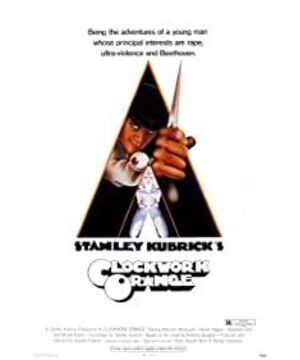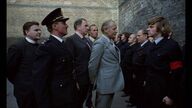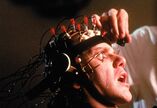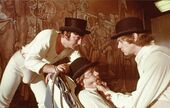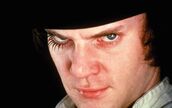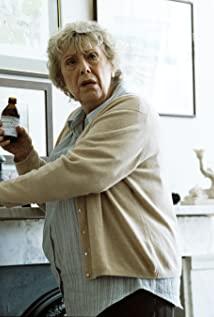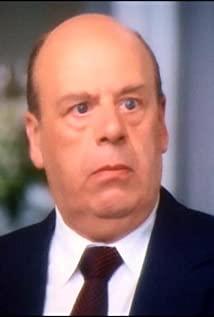A movie that needs a second brush is so special that I can only express my admiration with some scattered comments first.
The light and shadow effects are beautiful: the zoom at the beginning is zoomed out, and the ground trembles, elongates, and deforms the four figures, like charging spears and cage railings. On the stage of the report of the transformation results, the blue spotlight made the picture minimalist, the actors swaggered in gratitude, but Alex crouched on the edge.
A quick shot of a human face: Accompanied by the music and the bloodstains of the four porcelain figures, the female artist's face before being crushed to death is spliced with the painting. The crowded scene of the old homeless beating and beating seems to feel like spittle is flying.
The avant-garde set: the milk bar in the shape of a nude woman, and the exaggerated paintings of Mrs. Cat with vivid colors, very advanced in postmodern art, not to mention that this is an old film nearly 50 years ago.
Contrasting definitions of classic works: Alex's fantasy of violent eroticism in the "Bible" and the snow passion at the end of the film all have the solemnity and beauty of an oil painting texture. Alex is the intruder and performer of these sacred scenes, and he is well-dressed but also a beast. When Alex mocked the homeless man, "Oh, where is the world dirty?" There is an operatic tone, and he feels that he should not only be interested in Beethoven and the "Bible", he is also interested in many elegant arts. talented.
Beethoven, "Song in the Rain", a strong contrast between good and evil, but full of dynamic and exciting. The opening gang fight sequence is an example of a quick cut scene with music. Many later works have a similar approach. For example, in "The Detective Sherlock", Moriarty stole the crown of the British Empire with the accompaniment of Rossini's "Magpie Thief". The proud and elegant "you should see me in the crown" is One of the most classic scenes in the show (but Moriarty dancing is not long enough and expressive enough). In "The Tuner", the heroine kills the old lady with the accompaniment of "Fifth Symphony"; in "Hannibal", Hannibal produces a feast of human flesh with the accompaniment of "Faust". This soundtrack is anti-common sense and anti-emotional, but the memory is clear.
The original author's interpretation of "A Clockwork Orange" is that it marks the application of mechanical morality to sweet and juicy living organisms.
The discussion of the deprivation of the right to free choice and the fear of "brainwashing" are very similar to "1984"; the debauched life of the teenagers in the opening film, the life corrupted by hedonism, is very similar to "Brave New World".
Real freedom may never exist, people are always subtly manipulated and wound up, but the degree is shallow, dominant and recessive.
View more about A Clockwork Orange reviews


